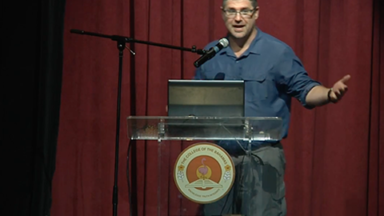Acoustic Telemetry reveals Nassau Grouper migratory movements during spawning season to unreported location in The Bahamas
Presented by Kristine Stump
Kristine Stump, Craig Dahlgren, Krista Sherman, and Charles Knapp
The Nassau grouper, Epinephelus striatus, was once one of the most important fishery species in the wider Caribbean, but due to heavy over-exploitation is now endangered and in decline throughout most of its native range. Over winter full moons, the formation of annual transient spawning aggregations at known locations makes this iconic species particularly vulnerable to overfishing. Recent telemetry research in The Bahamas has shown that Nassau grouper can migrate up to hundreds of miles along shelf edges to the same aggregation sites year after year. Approximately 30 aggregation sites have historically been reported in The Bahamas, known mostly through anecdotal information and local knowledge. Very few have been validated with observations of spawning behavior, and whether or not many of these locations still support active aggregations has only been minimally investigated. Based on previous work, we designed a new study that uses acoustic telemetry to describe long-distance migrations of Nassau grouper to and from reported aggregation sites in Andros, Bahamas. Throughout 2014, an array of acoustic receivers was placed at the Andros shelf edge along suspected migration routes from Chub Cay, Berry Islands to the southern Tongue of the Ocean. In December 2014, 16 adult Nassau grouper were surgically implanted with acoustic transmitters. Tagged grouper were confirmed to migrate along the shelf edge for up to hundreds of miles and in synchronicity with the January 2015 full moon. The telemetry data, paired with recent diver survey data, suggest that the historically prolific High Cay spawning aggregation may be defunct. However, detection data from the January 2015 full moon period suggest Nassau grouper may be migrating to an alternate location.







Recent Comments